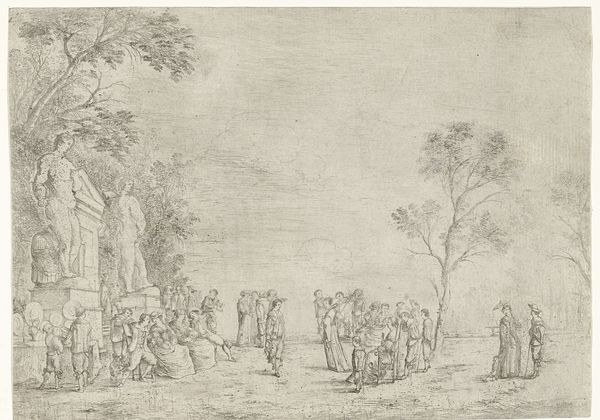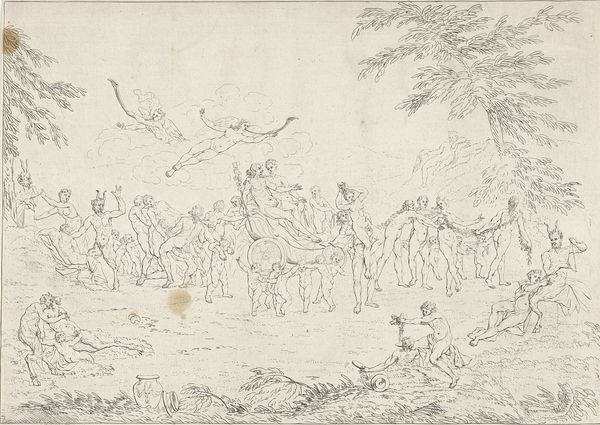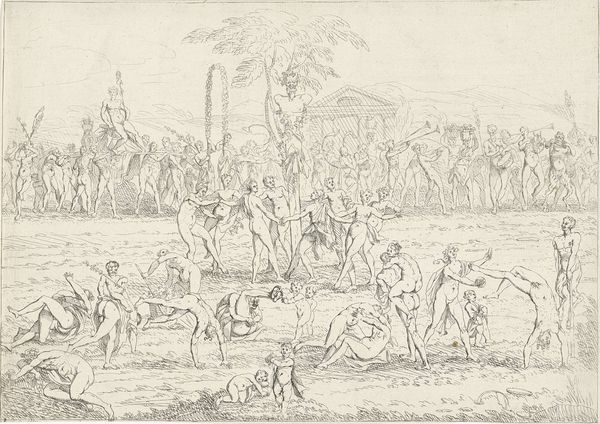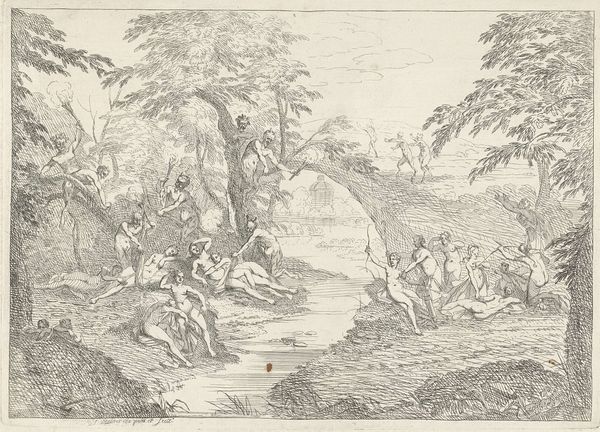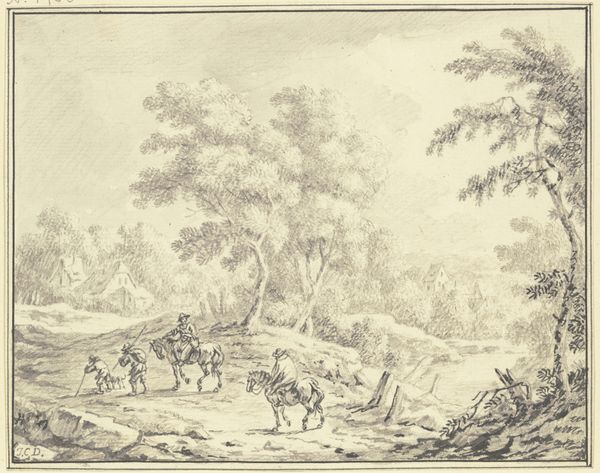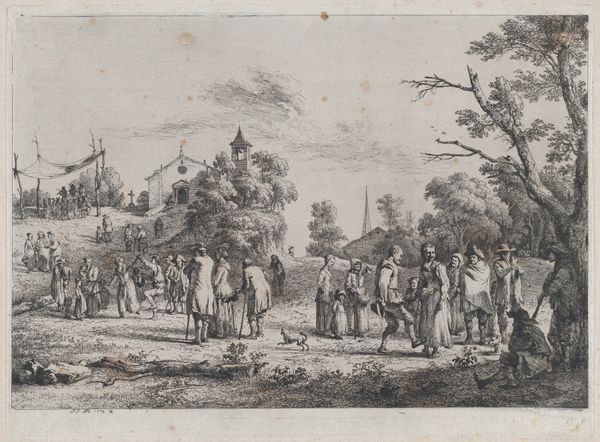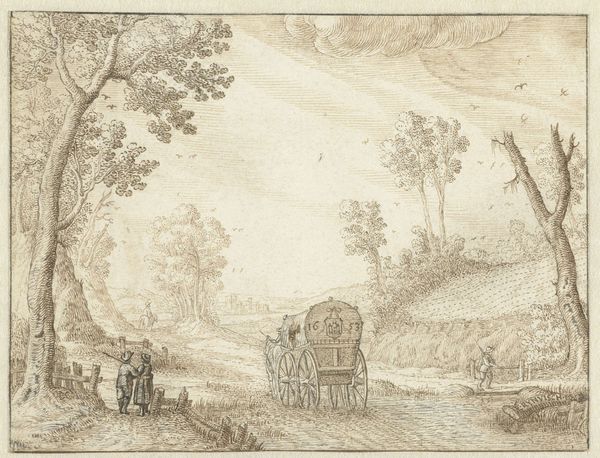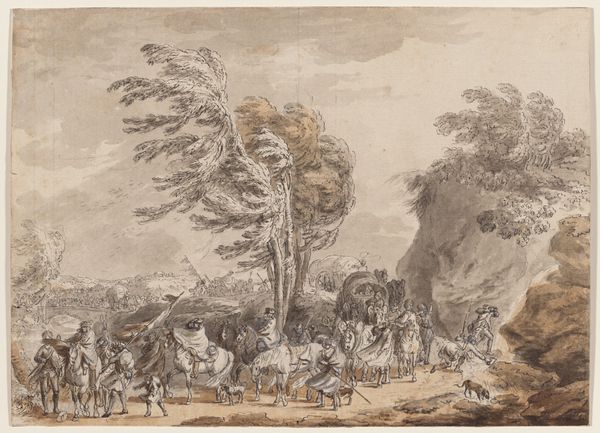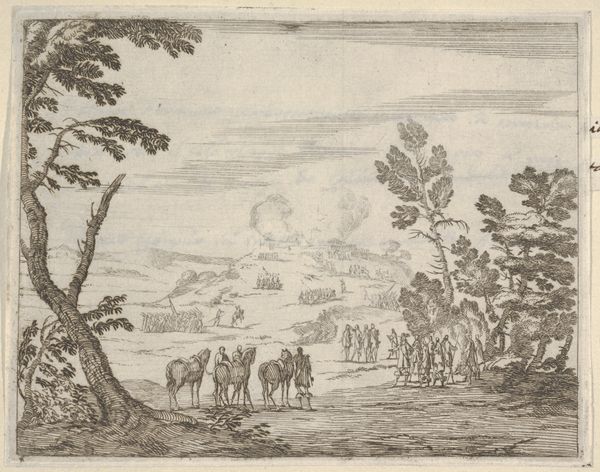
drawing, pen
#
drawing
#
baroque
#
pen sketch
#
landscape
#
figuration
#
pen
Dimensions: height 198 mm, width 275 mm
Copyright: Rijks Museum: Open Domain
Curator: This artwork is a pen drawing titled "Saters en nimfen bij een fontein," or "Satyrs and Nymphs by a Fountain," made around 1725 by Gerard Melder. Editor: It feels… frantic. The energy is palpable, isn't it? So many figures in motion, all sketched with this delicate yet urgent hand. It’s like catching a glimpse of forbidden revelry. Curator: It’s interesting you say that. The technique itself, this use of fine pen lines, suggests a level of skill and control – typical of Baroque draughtsmanship. But there's also something rebellious about depicting such a chaotic scene. Where was this made? For what market or patron was this drawing destined? These are critical questions. Editor: Absolutely. And look at how the figures are rendered. So much focus on idealized forms. How did Melder’s social standing dictate his ability to accurately capture this perceived "chaos?" What were the power dynamics inherent in such a representation? Curator: Precisely. He’s clearly referencing classical mythology, a familiar subject for the educated elite. Satyrs and nymphs, often associated with wild, unrestrained behavior. What's interesting is, to what extent were classical themes repurposed by those in the business of trade and mercantile pursuits? And can the material properties of pen, paper, and ink from this time also tell us something about how artists saw the classical world around them, and what they considered high art? Editor: The setting is also quite deliberate – a lush, idealized landscape. But it’s all a bit unsettling because this vision has an elite slant that makes these works less "art" and more like vehicles that justify those with socio-economic power. It feels a bit like the backdrop to some privileged drama. The composition itself invites you to imagine how these mythological figures and the "civilized" folks that knew them had many social rituals in common. Curator: It makes you wonder if this kind of idealized escape also held up the prevailing values of that elite. Were the artistic processes, methods, and standards that made art then very different than they are now? Editor: It's all a tightly controlled performance, really. Underneath the veneer of play, a carefully constructed societal facade existed. Curator: So, more than just a pretty drawing of mythological beings, this piece raises some fundamental questions about artistic representation, patronage, and the politics of seeing. Editor: Right! Who gets to depict and profit from visions such as these is a loaded inquiry. What starts off as a quaint landscape opens into this whole, knotty, socioeconomic conundrum.
Comments
No comments
Be the first to comment and join the conversation on the ultimate creative platform.
